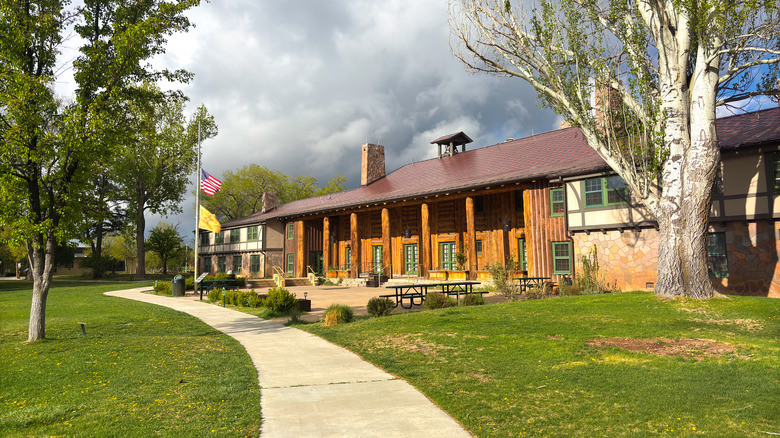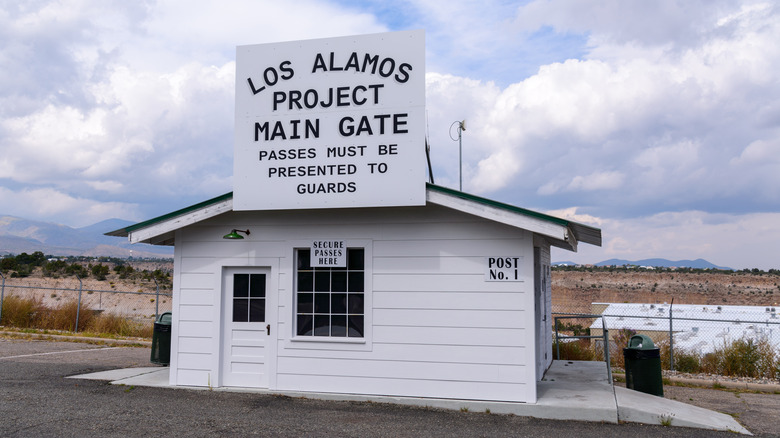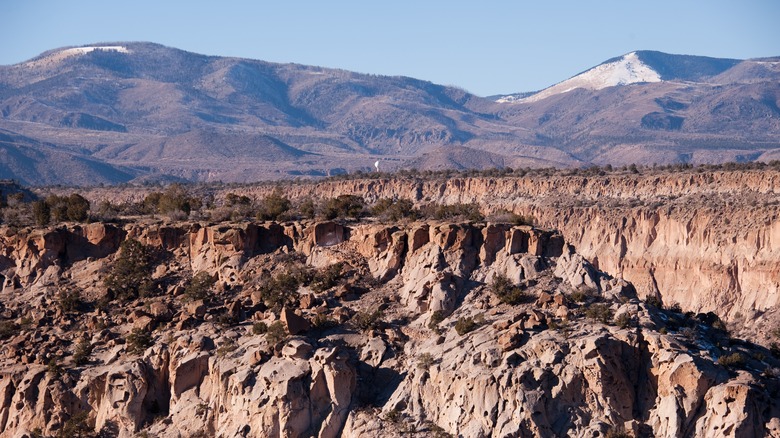The Real-Life 'Atomic City' Is A New Mexico Hub For Manhattan Project Sites, Canyon Trails, And Museums
On July 16, 1945, the first nuclear bomb exploded in the middle of the vast, isolated New Mexico desert, just outside the city of Socorro, which today is a popular birding destination with artsy charm. The Manhattan Project chose New Mexico as its base for building the nuclear bomb on the suggestion of Robert Oppenheimer, who had a ranch in Albuquerque. It would provide enough secrecy while having access to resources like water and a scenic backdrop to work in. While the first test occurred at the Trinity Site, the bomb was designed and assembled about 200 miles north, in a town that sprouted up around the atomic bomb research laboratory, known as Project Y or the Los Alamos Laboratory. Visit Los Alamos today, and you'll be walking on the grounds of a city that was once a top government secret and couldn't even be found on a map.
It comes as no surprise that much of what there is to do in Los Alamos today relates to its uniquely classified history. The Los Alamos History Museum details what life was like in the "Secret City," and the Los Alamos National Laboratory, which is still used as an active research center, offers tours of its inner sanctum for lucky visitors who win a lottery. But since its wartime years, Los Alamos has developed into much more than a covert government site. Its two main streets are full of charming cafés and restaurants, plus the town straddles the Bayo and White Rock Canyons, which offer wonderful opportunities for hiking and a nature center with a planetarium.
Getting to Los Alamos and what to see first
Los Alamos is about an hour-and-a-half drive from the Albuquerque International Sunport, or around 40 minutes from Santa Fe. As you cross the New Mexico desert, you'll pass steep cliffs and sacred villages like the Cochiti Pueblo with canyon views. After crossing over the Rio Grande, the road begins to slope upwards — Los Alamos was built on a mesa on the Pajarito Plateau. A recreated security gate, Main Gate Park, stands at the city's limit, where those who could come and leave Los Alamos were once strictly regulated.
Continue along Trinity Drive until you reach the Manhattan Project National Historical Park clustered around the scenic Ashley Pond. This is actually one of three sites that comprise the nation-spanning park, which also includes Hanford, Washington, where a historic nuclear reactor developed the plutonium used in the Los Alamos bomb. Near the pond is where you'll find the visitor center and the Ranch School Ice House. A seemingly unassuming structure, the Ice House is one of the most important sites in Los Alamos — it's where the Manhattan Project assembled the first atomic device.
The Ice House also represents a part of Los Alamos' history that predates atomic bomb-making. It was one of the existing buildings from the Los Alamos Ranch School. Much of the land that makes up Los Alamos was bought up by homesteaders in the 1880s, and these homesteads became a ranching school for boys. You can see an original homestead, the Romero Cabin, and one of the schoolhouses, the Fuller Lodge, next to the Los Alamos History Museum. Both were taken over by the Manhattan Project in 1942, which shut down the school under eminent domain.
Explore more of Los Alamos' downtown and nature
Continue exploring downtown Los Alamos by walking along Bathtub Row, where the Manhattan Project's most prominent members lived. The homes along Bathtub Row were the few built during wartime years that had bathtubs — hence the street's name — since many of the town's residences were constructed quickly to provide the bare necessities for project workers. At the north end of the street is the Oppenheimer House, once part of the Ranch School and later the dwelling of Oppenheimer himself (unfortunately, you can only see the home from outside).
The south end of Bathtub Row intersects with Central Avenue, one of the town's main thoroughfares, where you'll find lots of shops and places to eat. Ruby K's Bagel Café is a great stop for coffee and bagels, with 4.2 stars on TripAdvisor. For a proper meal, get some sushi at the Origami Restaurant, which holds 4.3 stars on Google, or Mexican food at El Rigobertos Taco Shop, which has 4.4 stars on Google.
When you're ready to get out into Los Alamos' outdoorsy side, start at the Los Alamos Nature Center. Here, you can pick up trail guides, see animals in the Wildlife Observation Room, and learn more about the stars over New Mexico at the planetarium. There are lots of trails crisscrossing the canyon landscape. One popular option is the 2.7-mile Canyon Rim Trail, which has some spectacular vantage points over the White Rock Canyon.


